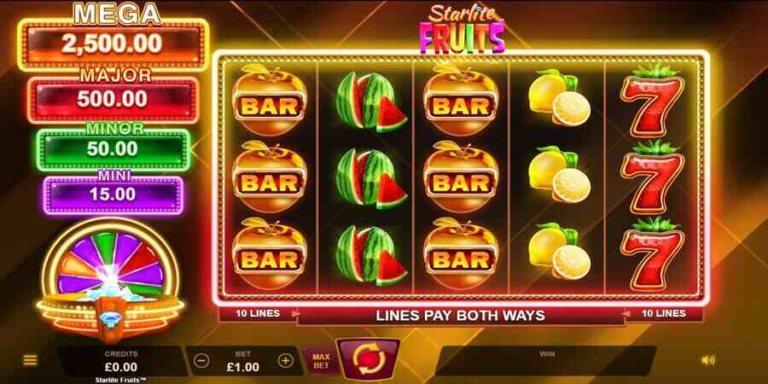What Is Slot Machine Hit Frequency and Why Does It Matter?
Slot machines are a staple of casino gaming, but their mechanics are often shrouded in mystery. One of the most crucial factors that influence how players perceive and enjoy slot games is hit frequency. If you’ve ever wondered why some games seem to pay out more often than others, understanding hit frequency can give you valuable insights into the slot experience.
What Is Hit Frequency in Slot Machines?
Hit frequency refers to the percentage of spins that result in a win, no matter how small. For example, if a slot machine has a hit frequency of 20%, it means that, on average, one out of every five spins will yield a winning combination. However, it’s important to remember that hit frequency doesn’t guarantee a pattern of wins—it’s calculated over millions of spins.
While many players associate hit frequency with how “lucky” a slot machine is, it’s a feature determined by the game’s design and programming. It directly affects how often players experience wins, making it a key factor in the slot’s overall appeal.
How Hit Frequency Is Calculated
The hit frequency of a slot machine is determined by its software and the Random Number Generator (RNG) that powers the game. Developers use mathematical models to decide the probability of different symbol combinations appearing on the reels.
Here’s how it works:
- Each symbol on the reels is assigned a specific probability of appearing.
- Winning combinations are mapped out based on these probabilities.
- The overall hit frequency is then calculated as the percentage of winning outcomes compared to the total possible outcomes.
Hit Frequency vs. Return to Player (RTP)
It’s important to distinguish hit frequency from Return to Player (RTP), another key metric in slot gaming. While RTP measures the percentage of total wagered money that a slot will return to players over time, hit frequency measures how often players can expect to win.
For example:
- A slot with a high hit frequency but low RTP might offer frequent small wins, keeping players engaged but not yielding significant payouts.
- Conversely, a slot with a low hit frequency and high RTP may offer fewer wins but larger payouts when they do occur.
Understanding the difference helps players choose games that align with their preferences, whether they’re looking for frequent entertainment or the chance at big wins.
Why Hit Frequency Matters
Hit frequency significantly impacts the player experience and is a critical factor to consider when choosing a slot gacor machine. Here’s why it matters:
1. Player Engagement
Games with a high hit frequency provide frequent wins, keeping players engaged and motivated to keep spinning. These games are ideal for players who enjoy the excitement of regular payouts, even if they’re small.
2. Bankroll Management
Understanding a slot’s hit frequency helps players manage their bankroll effectively. High-frequency games allow players to stretch their budget over more spins, while low-frequency games may require a larger bankroll to sustain play during dry spells.
3. Game Preferences
Some players enjoy the steady thrill of frequent wins, while others prefer the anticipation of landing a rare but substantial payout. Hit frequency helps players identify which type of game suits their style.
4. Game Strategy
For players using betting strategies, knowing the hit frequency can help determine the optimal approach. High-frequency games may be better for gradual betting strategies, while low-frequency games might align with high-risk, high-reward tactics.
High Hit Frequency vs. Low Hit Frequency
Slot machines can generally be categorized into high-frequency and low-frequency games, each with distinct characteristics.
High Hit Frequency Slots
- Features: Frequent small wins, typically low to medium volatility.
- Best For: Casual players, beginners, or those looking to play for extended periods without depleting their bankroll.
- Examples: Classic slots or games with a high number of paylines and low bet amounts.
Low Hit Frequency Slots
- Features: Less frequent but larger wins, typically high volatility.
- Best For: Experienced players or those with a larger bankroll and a tolerance for risk.
- Examples: Progressive jackpot slots or games with bonus features that trigger less often.
How to Find a Slot’s Hit Frequency
Unlike RTP, hit frequency is not always readily displayed by game developers. However, players can get a sense of a slot’s hit frequency by observing its gameplay or reading reviews and guides.
- Gameplay Observations: Play the slot in demo mode and track how often you land a win. A game that pays out frequently likely has a high hit frequency.
- Slot Reviews: Many online guides and reviews provide details about a game’s hit frequency, helping players make informed choices.
- Paytable Analysis: Examine the paytable for clues. Games with a large number of low-paying combinations tend to have higher hit frequencies.
Balancing Hit Frequency with Other Features
While hit frequency is an important factor, it shouldn’t be the sole consideration when choosing a slot game. Players should also consider:
- Theme and Graphics: A game’s visual appeal can enhance the overall experience.
- Bonus Features: Free spins, wilds, and multipliers can make a game more exciting, regardless of hit frequency.
- Bet Limits: Ensure the game fits your budget and preferred betting style.
Conclusion
Hit frequency is a fundamental aspect of slot games that directly impacts how often players can expect to win. By understanding this metric, players can choose games that align with their preferences and maximize their enjoyment. Whether you prefer the steady thrill of frequent wins or the anticipation of a big jackpot, knowing about hit frequency will help you make more informed decisions in your slot gaming journey.

